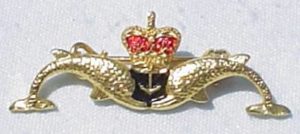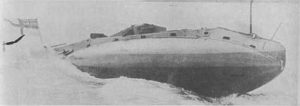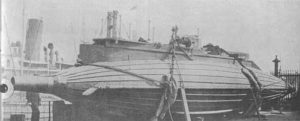- Author
- A.N. Other and NHSA Webmaster
- Subjects
- History - general, Naval history
- Tags
-
- RAN Ships
- None noted.
- Publication
- December 1972 edition of the Naval Historical Review (all rights reserved)

THE GERMAN NAVY commenced World War II with fifty-six submarines, of which only twenty four were suitable for operations in the Atlantic. In the five and a half years of the war, German shipyards built 1,156 U-boats, of which 784 were lost from enemy action or other causes.

Their toll of enemy shipping was 2,603 merchant ships of over 13½ million tons, and 175 naval vessels of all types.
In terms of human lives, 28,000 German U-boat crew of the total 40,900 men recruited into the service lost their lives and 5,000 were taken prisoners of war. Some 30,000 men of the allied merchant service died, in addition to an unknown number of Allied naval personnel.
When the war ended, 156 U-boats surrendered, 221 were scuttled by their own crews and two escaped to Argentina.
German U-boats in World War II operated in all oceans of the world and were responsible for sinking enemy ships in areas as far distant as the Dutch East Indies and the Arctic Ocean.

Royal Navy submarine losses in World War II were 79. These were conventional vessels and do not include seven X craft, 18 chariots and 5 Welman craft. The first RN loss was HMS Oxley (formerly HMAS Oxley), which was accidentally sunk in a collision with the submarine Triton off Stavanger on 10th September 1939. The last vessel lost was HMS Porpoise, based at Fremantle, which was sunk by Japanese aircraft in the Malacca Straits on 16th January 1945.
Only one British submarine was captured by the enemy in World War II. She was HMS Seal which was heavily damaged after striking a mine in Norwegian waters. Four submarines were sunk by our own forces and seven were lost by unknown causes.




